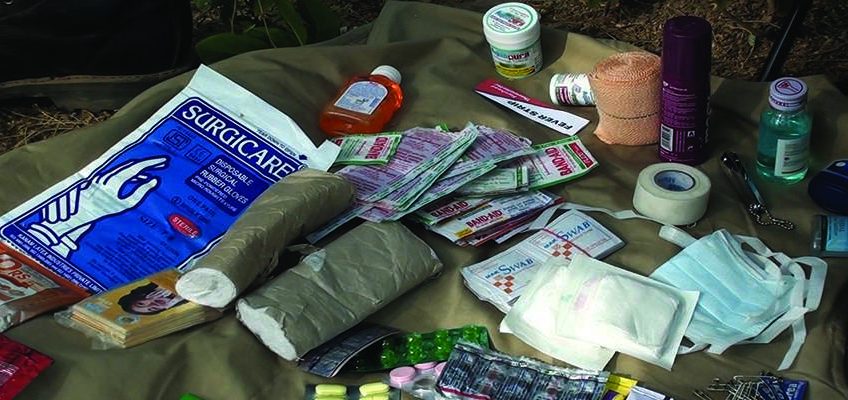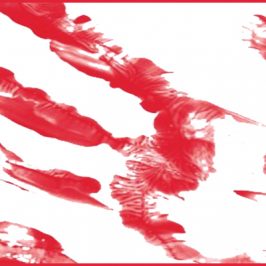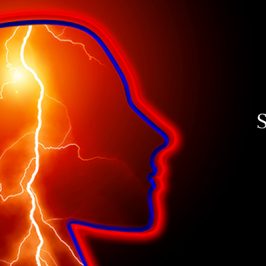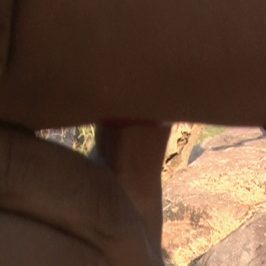In the wilderness you are on your own.
Or at best in the company of fellow adventurers. While you can and should enjoy the wonders, you have to remember that you are not used to living off-the-land, you are a part-time adventurer, a day hiker, a weekend adventurer, who steps into the outdoors once in a while, after venturing out from the cocoon of a largely sheltered city existence.
You need to be prepared for the odd incident that has more than a fair chance of occurring - cuts, bruises, sprains, dehydration, fever, dislocated shoulder, etc. You have to be prepared. And a First Aid Kit is imperative to treat injuries sustained in the wild. When in the outdoors you are by yourself. With medical help back in the city, you have to treat all wounds and injuries by yourself.
Remember that even the smallest injury can turn nasty due to all the germs you are exposed to in the wilderness. A first aid kit will enable you to try and prevent a bad situation from getting worse. If you sustain any injury that has a possibility of turning serious, you should immediately abandon your adventure and head for a medical facility to get yourself treated. It does not take long for a small cut to turn septic. The outdoors will always be there, but a serious injury can keep you away from your adventures for a long time.
If you want to live off-the-land for extended periods of time, it will be a good idea to learn about local medicinal plants that you can use to treat a wound or injury or to soothe a rumbling and agitated stomach. That takes a long time to master and as a weekend adventurer, you would do well to learn about survival first aid and to carry a first aid kit.
There is no substitute for hands-on experience, nor is there any substitute for proper training from a professional. Many serious injuries, even though sustained in the wild, require urgent and professional medical attention. However, because we do not have a dependable search and rescue facility in India (even ambulances and paramedics are often unavailable), there is no 911 number to call, when you are alone out there you need to be able to administer immediate first aid to stabilise the condition, to make the job of the doctor easier once you do reach a medical facility. To be able to do that, you need to carry a First Aid Kit and know what is where, what each item is meant for and how it works.
There are off-the-shelf kits available in the market. Many are good, some are apologies. I suggest you build your own First Aid Kit so that you know what it contains, what it is required for and how it is to be used. Only you know where you are going and what your Kit should contain. Every terrain has a different requirement and the contents of your Kit will vary depending on whether you are going into the desert or the mountain, a river run or a trek in the jungle.
You have to decide what to carry in your First Aid Kit based on the kind of environment you will find yourself in and the kind of injuries that are likely.
Ideally the Kit should be in a crush proof container. But then you may not always carry it with you and just when you need it the most, you will find it lying in your car or tent or hotel room, because you were “just out for a walk”. If it is of malleable, flexible material, it is easier to carry in your Day Pack. If it comes with a sling or belt, you can hang it around your neck or wrap it around your waist. Whatever you choose, make sure it is always with you and that it is fairly rigid to prevent crushing the items.
I suggest combining the Survival Kit and the First Aid Kit in a bum bag that is large enough for all the contents of the two Kits, yet small enough to be worn around your waist, and separated into two distinct sections for each Kit. I have found this to be the best method to ensure that you always have your survival gear and first aid stuff with you, no matter for how long you plan to be outdoors in the wilderness. Worn around your waist, make it a habit to never take it off except for the time you are tucking in for the night.
One also needs to recognise and learn about medicinal herbs and plants. Almost all medicines have their source in plants and if we can learn about them, the less dependent we will be on the chemist. But that is probably too much to ask of a day hiker. It is better to avoid plants and eliminate the risk of poisoning yourself and making matters far worse. Knowing medicinal plants and their uses is for more serious adventurers and survivalists. Also, these most of these plants are indigenous to a particular region or geography. You will need to learn about the specific plants in the region you are going to. That takes a lot of research and as a weekend adventurer, chances are you do not have the time or the inclination to indulge in that pursuit.
For our purpose, we need a First Aid Kit, assembled from items bought from the drug store. If some of these items can double for other uses as well, so much the better. For instance, we will look at the uses of potassium permanganate to (a) disinfect water, (b) as an antiseptic solution, (c) to start fires and (d) for signalling.
Anyway, a basic first aid kit should contain the following items:
Basic components
- Gauze pads
- Gauze roll
- Adhesive bandage
- Butterfly closures
- Antibiotic ointment
- Crepe bandage
- Alcohol rub
- Fever strip
- Corn caps
- Syringe
- Hand sanitiser
- Soap paper
- Tweezers
- Scissors
- Latex gloves
- Surgical mask
- Aloe vera gel
- Petroleum jelly
- Glycerine
- Calamine lotion
- Sutures
- Nylon string
- Spray bandage
- Pain spray
- Surgical blade / scalpel
- Snake bite kit
- Length of latex tubing
- Adrenaline ampoule or EpiPen
- Sanitary napkins
- KMnO4 crystals
- 2% Tincture of Iodine
Medication
- Prescription medicines
- Fever
- Aches and pains
- Pain killer
- Headache
- Nausea
- Diarrhoea
- Burn ointment
- Anti fungal cream
- Antiseptic cream
- Oral Rehydration Salt
- Diamox (for high altitude)
Maybe there are some items left over from your outing a few months ago. Recheck the items and ensure they are not beyond their expiry date. Replace the items that are running low. Know what the medicines are for. And know how much is good for you. Prevention is actually better than a cure in the wilderness and it makes sense to take a medicine when you are starting to feel down.
In an ideal world, you would probably not carry as many items as listed above.
You might carry some basic medication, if at all. Maybe some items that can be multitasked. But as mentioned before, you are in an environment that is alien and have gone out of your comfort zone looking for a good time. If some small niggles affect you, it is a good idea to have something familiar to treat it with, instead of having to suffer from the fever for an extended period making life miserable, when you know that a couple of tablets could have done the job if only you had remembered to pack them in. If you do not have paracetamol tablets and are suffering from a fever, you just might have to abandon your adventure when popping a couple of tablets might have ensured otherwise.
Pack your first aid kit carefully and diligently. Do not over pack.










Leave a Reply
You must be logged in to post a comment.